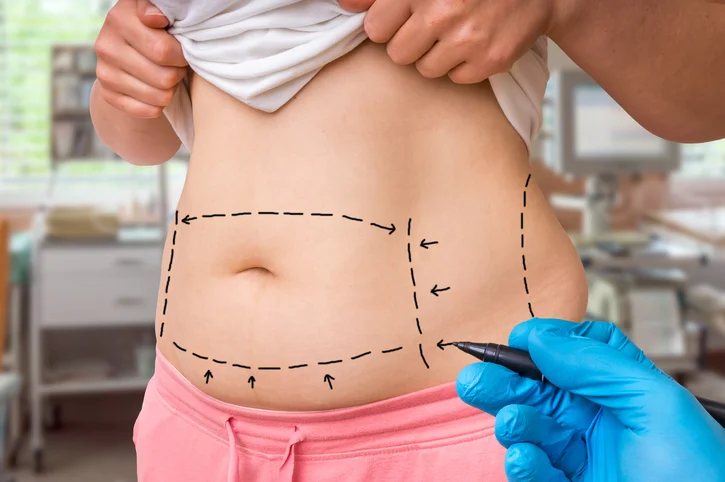
Understanding Your Options for Intimate Wellness and Comfort
Many women silently experience physical discomfort or self-consciousness about the appearance of their labia—the delicate tissues surrounding the vaginal opening.
Concerns about labial appearance have become increasingly common among both adolescents and adults, despite research showing a wide natural variation in the size and shape of the labia minora across all age groups.
Labiaplasty has become increasingly sought after as women become more empowered to address both functional and aesthetic concerns. This guide explores what labiaplasty entails, who might benefit from it, and what to expect before, during, and after the procedure.
Understanding Labiaplasty: What It Is and How It Works
Labiaplasty is a surgical procedure designed to alter the size, shape, or symmetry of the labia minora (inner lips) and sometimes the labia majora (outer lips) of the vulva. The female external genital anatomy includes several components:
- The labia majora are the outer, larger lips that contain fatty tissue and protect the more delicate structures
- The labia minora are the inner, smaller lips that surround the vaginal and urethral openings
- The clitoris sits at the top of the vulva where the labia minora meet
A labiaplasty procedure typically focuses on the labia minora, which can naturally vary significantly in size, shape, and symmetry among women.
What Are the Types of Labiaplasty Procedures?
Several surgical techniques are used in labiaplasty, each with specific benefits depending on the patient’s anatomy and goals:
- Trim Procedure: The most common technique involves removing excess tissue along the edge of the labia minora. This creates a natural-looking edge while reducing length and bulk.
- Wedge Procedure: This technique removes a pie-shaped piece of tissue from the thickest part of the labia minora while preserving the natural edges. It maintains the original color and texture of the labial edge.
- Composite Reduction: This approach combines elements of both trim and wedge techniques, offering customized results for patients with complex anatomy.
- De-epithelialization: A less common technique that reduces the size of the labia without removing the edges, instead removing tissue from the central portion.
Why Do Women Consider Labiaplasty Beyond Aesthetic Reasons?
Physical Comfort and Functional Concerns
Many women seek labiaplasty primarily for physical comfort rather than cosmetic reasons:
- Discomfort during physical activities: Elongated labia can cause pinching, pulling, or chafing during exercise, cycling, or horseback riding
- Discomfort in clothing: Tight-fitting clothing like yoga pants, swimwear, or undergarments can cause irritation or visible protrusion
- Pain during intercourse: Excess labial tissue can be pushed inside during intercourse, causing pain or discomfort
Aesthetic and Psychological Considerations
Aesthetic concerns are also valid reasons for considering labiaplasty:
- Asymmetry: Natural developmental differences or changes after childbirth can create asymmetry
- Self-consciousness: Concerns about appearance can affect confidence in intimate relationships
- Improved hygiene: Some women find that excess labial tissue makes thorough cleaning more difficult
It’s important to note that there is tremendous natural variation in labial appearance, and many women’s concerns fall well within the normal range. The decision to pursue surgery should always be personal and not based on perceived societal standards.
Many patients report significant improvements in self-confidence, body image, and overall quality of intimate relationships following successful labiaplasty.
Are You a Candidate for Labiaplasty?
Good candidates for labiaplasty typically include women who:
- Are in good overall physical and mental health
- Have fully developed genitalia (generally adults over 18)
- Experience physical discomfort related to labial size or shape
- Have specific, realistic goals regarding the outcome
- Understand both the benefits and limitations of the procedure
- Are not pursuing surgery solely due to pressure from others
The Consultation Process: What to Expect
The initial consultation is a crucial step in determining if labiaplasty is right for you:
- Your surgeon will review your medical history, including previous surgeries, medications, and health conditions
- A physical examination will evaluate your anatomy and determine if your concerns can be addressed with labiaplasty
- You’ll discuss your specific goals and what you hope to achieve with the procedure
- The surgeon will explain recommended techniques, potential risks, and expected outcomes
- Photos will be taken for your medical record and surgical planning
- You’ll have the opportunity to ask questions about the procedure, recovery, and results
Preparing for Your Labiaplasty Procedure
Proper preparation helps ensure a smooth surgery and recovery:
- Complete any requested medical evaluations or lab tests
- Adjust medications as directed (particularly blood thinners)
- Stop smoking at least 2-4 weeks before and after surgery
- Avoid certain supplements that may increase bleeding risk
- Arrange for someone to drive you home after the procedure
- Prepare your recovery space with comfortable pillows, loose clothing, and necessary supplies
The Labiaplasty Procedure: Step-by-Step
Surgical Process and Techniques
Labiaplasty is typically performed as an outpatient procedure that takes 1-2 hours:
- Anesthesia: At Aguirre Specialty Care, Dr. Aguirre performs awake, in-office labiaplasty procedures under local anesthesia.
- Marking: The surgeon carefully marks the areas of tissue to be removed prior to making incisions, ensuring precise planning for the desired result.
- Incision and Tissue Removal: Using the chosen technique (trim, wedge, etc.), the surgeon precisely removes excess tissue.
- Suturing: Fine, dissolvable sutures close the incisions, creating a natural-looking contour.
- Recovery Room: After surgery, you’ll spend a short time in recovery before being discharged home the same day.
Timeline for Healing After Labiaplasty
Understanding the recovery timeline helps set realistic expectations:
|
First 24-48 hours |
Expect swelling, discomfort (throbbing or soreness), and possibly bruising. Pain medication helps manage discomfort, which is most significant during this period. |
|
First week |
Most patients can return to desk work and light activities like gentle walking, meal preparation, and self-care. Swelling and tenderness gradually improve. |
|
2-4 weeks |
Most swelling subsides, though some residual swelling may remain. Many patients can return to moderate walking and light cardio exercise without significant friction in the genital area. |
|
6 weeks |
Most patients can resume sexual activity and all normal activities, including more vigorous exercise. |
|
3-6 months |
Final results become apparent as all swelling resolves and tissues fully heal. |
Essential Aftercare Instructions
Proper aftercare significantly impacts your healing and results:
- Apply cold compresses intermittently during the first 48 hours to reduce swelling
- Keep the area clean by gently rinsing with water after using the bathroom
- Wear loose, breathable cotton underwear and avoid tight clothing
- Sleep with a pillow between your legs for comfort
- Avoid strenuous exercise, swimming, hot tubs, and sexual activity for 4-6 weeks or as directed
- Take prescribed antibiotics if indicated and use pain medication as needed (typically over-the-counter medications after the first few days)
- Attend all follow-up appointments for proper evaluation of healing
Understanding Potential Complications
Like any surgery, labiaplasty carries some risks:
- Bleeding or hematoma formation
- Infection
- Changes in sensation (usually temporary but occasionally permanent)
- Asymmetry or unsatisfactory aesthetic result
- Scarring (though usually minimal and hidden within natural creases)
- Rare complications such as wound separation or need for revision
Expected Results and Longevity
Labiaplasty results are generally considered permanent:
- Reduction in the size and projection of the labia minora
- Improved symmetry and appearance
- Relief from physical discomfort during activities and intimacy
- Long-lasting results that typically don’t change over time, though natural aging may affect all genital tissues
How Much Does Labiaplasty Cost?
The investment for labiaplasty typically ranges from $4,000 to $8,000, depending on:
- Geographic location
- Surgeon’s experience and expertise
- Facility fees and anesthesia type
- The complexity of your specific case
Insurance rarely covers labiaplasty unless there is documented medical necessity for functional impairment.
How to Choose a Qualified Surgeon
The success of your labiaplasty largely depends on your surgeon’s expertise:
- Look for board certification in plastic surgery, gynecology, or urogynecology
- Verify specific training and experience in female genital procedures
- Review before-and-after photos of previous labiaplasty patients
- Read patient testimonials and reviews
- Ensure you feel comfortable with their communication style and approach
Are There Non-Surgical Alternatives?
It’s important to understand that there are no truly effective non-surgical alternatives that can reduce or reshape the labia. Some temporary measures to manage discomfort include:
- Supportive undergarments for activities
- Topical moisturizers and anti-chafing products
- Pelvic floor physical therapy for related pelvic pain
However, these approaches cannot address the structural concerns that labiaplasty is designed to correct.
Conclusion
Labiaplasty offers a solution for women experiencing physical discomfort or self-consciousness related to labial anatomy. The key to successful outcomes lies in thorough research, realistic expectations, and choosing an experienced specialist who prioritizes both function and aesthetics.
At Aguirre Specialty Care in Denver, we understand the sensitive nature of these concerns and provide compassionate, expert care for women considering labiaplasty. Our approach focuses on understanding each patient’s unique needs and creating customized treatment plans that enhance both comfort and confidence.
Remember that every woman’s body is unique, and the decision to pursue labiaplasty should be made for yourself, not to meet someone else’s expectations. With proper information and the right surgical team, labiaplasty can be a positive step toward improved physical comfort and confidence.
If you are considering labiaplasty, we encourage you to schedule a consultation with Dr. Aguirre to discuss your individual concerns and determine if this procedure is right for you.




